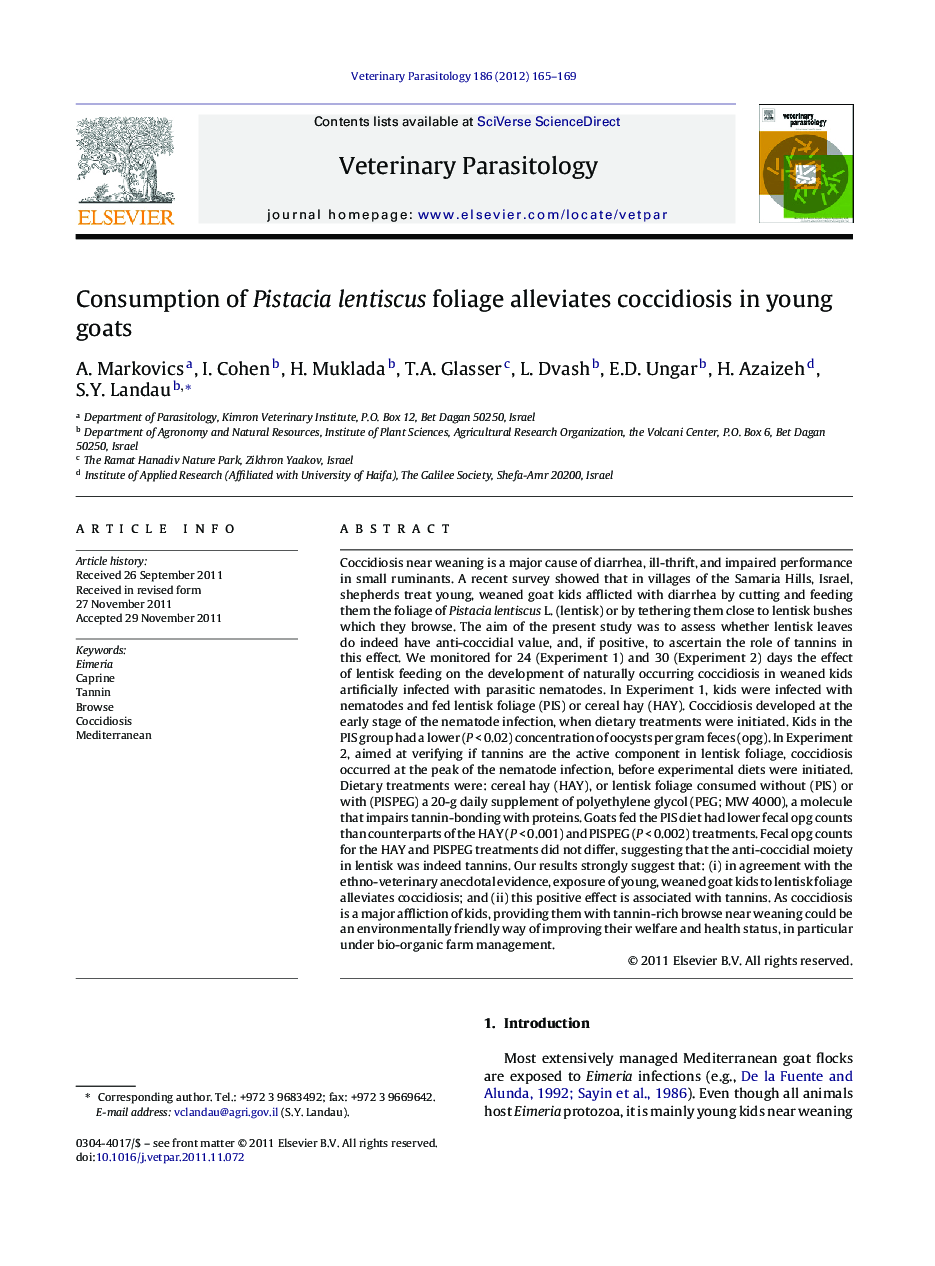| کد مقاله | کد نشریه | سال انتشار | مقاله انگلیسی | نسخه تمام متن |
|---|---|---|---|---|
| 5804966 | 1555714 | 2012 | 5 صفحه PDF | دانلود رایگان |

Coccidiosis near weaning is a major cause of diarrhea, ill-thrift, and impaired performance in small ruminants. A recent survey showed that in villages of the Samaria Hills, Israel, shepherds treat young, weaned goat kids afflicted with diarrhea by cutting and feeding them the foliage of Pistacia lentiscus L. (lentisk) or by tethering them close to lentisk bushes which they browse. The aim of the present study was to assess whether lentisk leaves do indeed have anti-coccidial value, and, if positive, to ascertain the role of tannins in this effect. We monitored for 24 (Experiment 1) and 30 (Experiment 2) days the effect of lentisk feeding on the development of naturally occurring coccidiosis in weaned kids artificially infected with parasitic nematodes. In Experiment 1, kids were infected with nematodes and fed lentisk foliage (PIS) or cereal hay (HAY). Coccidiosis developed at the early stage of the nematode infection, when dietary treatments were initiated. Kids in the PIS group had a lower (PÂ <Â 0.02) concentration of oocysts per gram feces (opg). In Experiment 2, aimed at verifying if tannins are the active component in lentisk foliage, coccidiosis occurred at the peak of the nematode infection, before experimental diets were initiated. Dietary treatments were: cereal hay (HAY), or lentisk foliage consumed without (PIS) or with (PISPEG) a 20-g daily supplement of polyethylene glycol (PEG; MW 4000), a molecule that impairs tannin-bonding with proteins. Goats fed the PIS diet had lower fecal opg counts than counterparts of the HAY (PÂ <Â 0.001) and PISPEG (PÂ <Â 0.002) treatments. Fecal opg counts for the HAY and PISPEG treatments did not differ, suggesting that the anti-coccidial moiety in lentisk was indeed tannins. Our results strongly suggest that: (i) in agreement with the ethno-veterinary anecdotal evidence, exposure of young, weaned goat kids to lentisk foliage alleviates coccidiosis; and (ii) this positive effect is associated with tannins. As coccidiosis is a major affliction of kids, providing them with tannin-rich browse near weaning could be an environmentally friendly way of improving their welfare and health status, in particular under bio-organic farm management.
Journal: Veterinary Parasitology - Volume 186, Issues 3â4, 25 May 2012, Pages 165-169